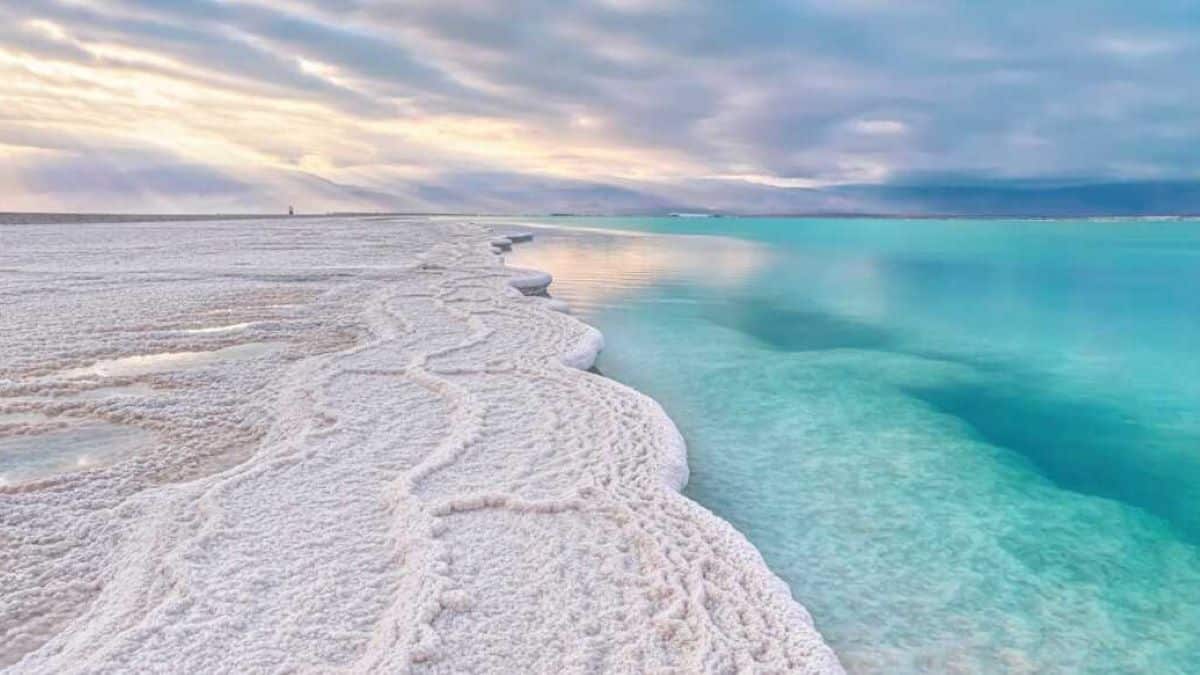Oceans cover more than 70% of the Earth’s surface and are important in regulating global climate. They store and release heat through ocean currents and provide water vapor to the atmosphere through evaporation. But why is sea water salty? Find the answer to this question and explore a world full of information and mystery.
Why is sea water salty and not fresh?
If you’ve ever tasted seawater, you’ve surely noticed its unique salty taste. But why does seawater not have the pleasant taste of water from rivers and lakes? The answer is simple: sea water contains minerals and salt.
In fact, seawater contains various dissolved minerals, the most abundant of which is sodium chloride, commonly known as salt. As water flows from rivers to the ocean, it carries dissolved minerals and sediments with it.
Over time, seawater becomes more salty as it evaporates and concentrates minerals. Although rivers may contain minerals, the amount of fresh water is very low compared to the salinity of the ocean.
The average salinity of seawater is about 35 grams of salt per liter, meaning that every kilogram of seawater contains about 35 grams of dissolved salt. It’s a lot! If all the salt in the sea were extracted and spread over the surface of the earth, it would create a very dense salt.
In short, seawater contains salt and other dissolved minerals that it carries from rivers to the ocean. Over time, seawater evaporates and concentrates these minerals, becoming more salty. That’s why it has a unique taste!
Saltiest sea in the world
The Dead Sea is considered the saltiest sea in the world. It is located on the border of Israel, Palestine and Jordan. Its salinity is significant, with a salt concentration of about 34%, or 10 times saltier than average seawater.
This high salinity can be attributed to the fact that it is located in an endorheic basin, meaning it has no access to the sea. Over time, salts and minerals transported by rivers have accumulated in this basin, resulting in an exceptionally high salt content.
Technically, the Dead Sea is a large endorheic lake. If we talk strictly about the sea, the Red Sea has the highest salinity, ranging from 42 to 46 grams per liter. It is followed by the Mediterranean Sea, whose salt concentration ranges from 36 to 39 grams per liter.
Oceans and salinity
The Atlantic Ocean is the saltiest of all oceans. It is in its tropical regions that water evaporates faster due to the strong heating of the sun, which increases salinity in these regions.
In the North Atlantic, the Sargasso Sea is well known for its high salinity. It is located 3,000 kilometers west of the Canary Islands. Ocean currents contribute to the overall salinity of this majestic ocean by transporting salt water from place to place.
It should be noted that the salinity of seas and oceans varies depending on geography, climate, evaporation, and other factors. In different parts of the world, we find seas and oceans that differ in salinity, creating unique ecosystems adapted to these specific conditions.
For example, in regions near the poles, where fresh water from melting ice is abundant, the salinity of seawater is low. On the other hand, in tropical and desert regions, where evaporation is high, the salinity of sea water is high.
Our oceans, with their varying salinities, remind us of the beauty and complexity of nature. Explore their depths and marvel at the incredible flavor palettes they offer!

“Tv expert. Writer. Extreme gamer. Subtly charming web specialist. Student. Evil coffee buff.”







More Stories
The first trial of the “Citizens of the Reich” conspiracy was opened in Stuttgart
A British teenager has found some of the rarest LEGO pieces that fell off a boat in 1997
Russia says it has captured a new village in eastern Ukraine